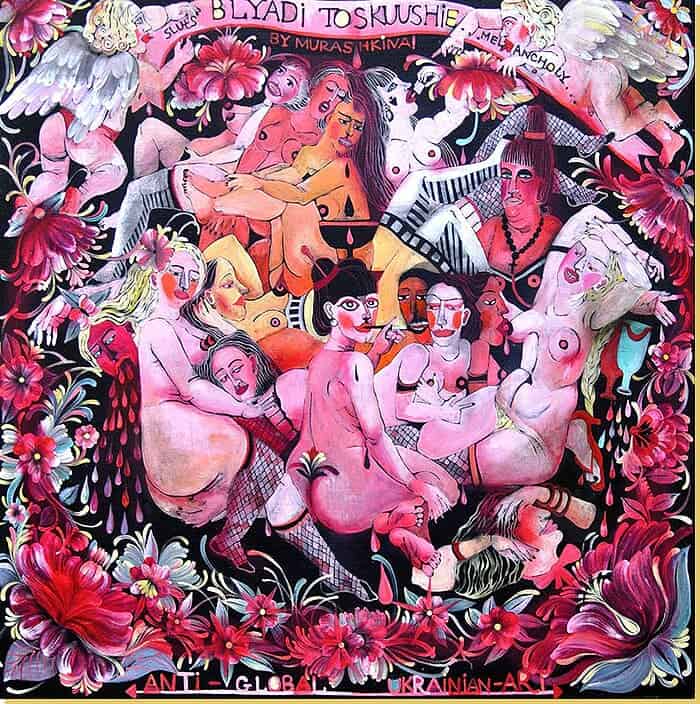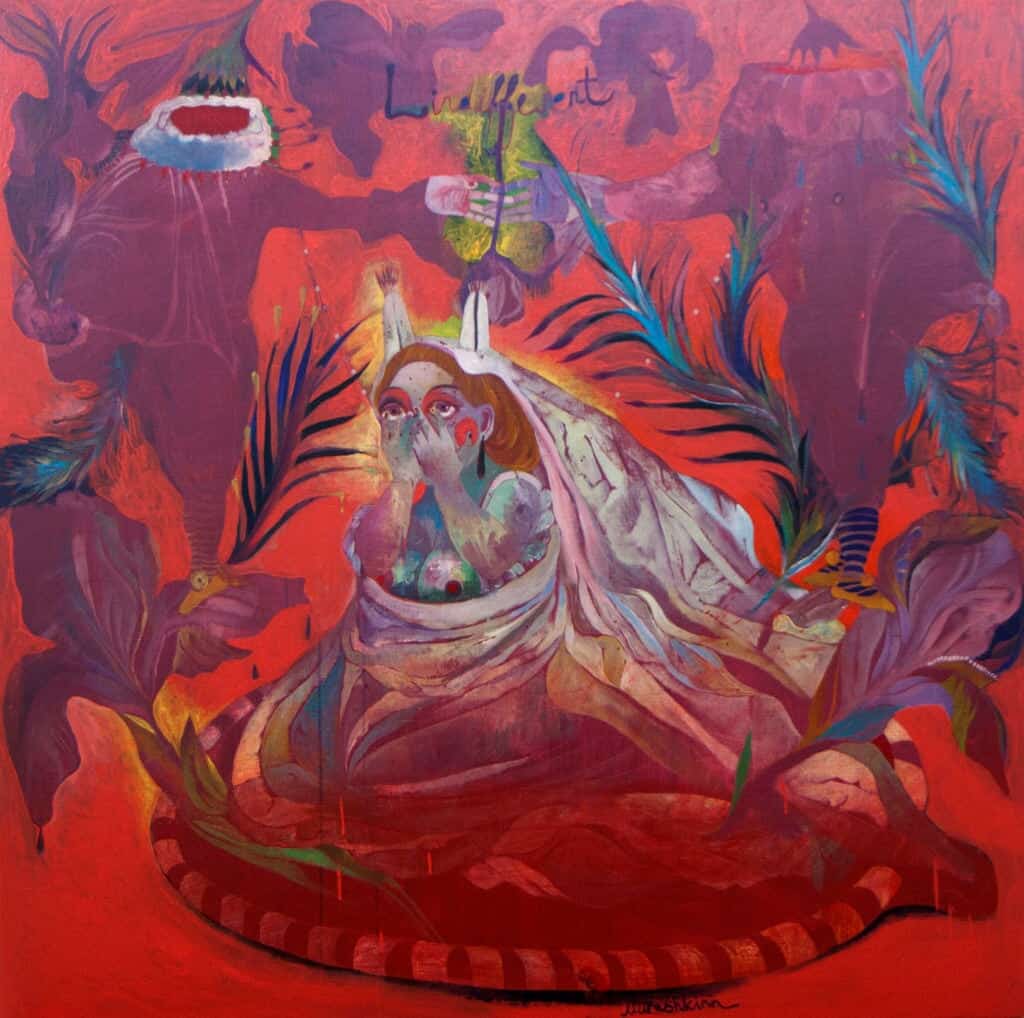The dissolution of the Soviet Union, the ensuing economic crisis, inflation, the patriarchal system of society, the Orange Revolution, Euromaidan, a change of power and then war; in a brief portrait of modern Ukraine, these would be the main characteristics. In a State where Society is coming close to falling into deprivation, Art comes to life and takes on the roles of the manifesto, the media, and the space for dialogue.
Contemporary Lynx has picked five of Ukraine’s top artists, who are known for communicating directly with audiences using the international language of Art, and revealing Society’s state; it’s essence.
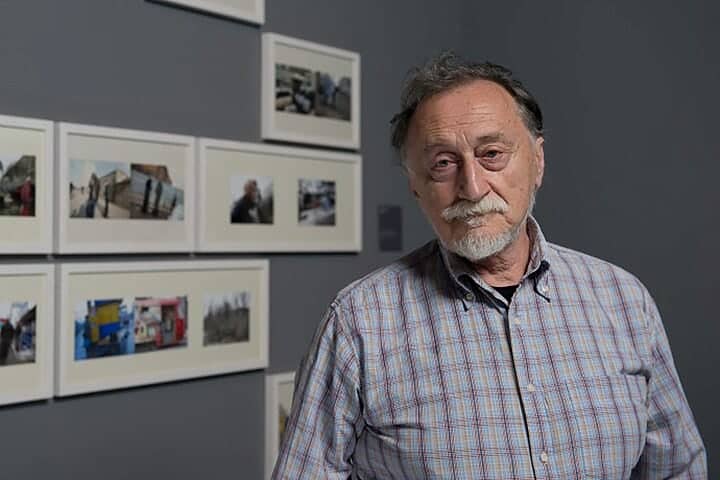
Boris Mikhailov
Boris Mikhailov is one of the most significant of today’s contemporary photographers, not only for Ukraine but for the World. Born in Kharkiv in 1938, this genius of photography explored and documented the collapse of the USSR. The Ukrainian photographer created an honest and brutal portrait of the post-Soviet reality: A mix of poverty, loneliness, people’s bodies, absurdity, symbolism, and a total lack of taboos.
In 2000, Mikhailov won the Hasselblad Foundation International Award in Photography; in 2008 he became a member of the Academy of Visual Arts in Berlin, and in 2015 received the prestigious Kaiser Award. The works of this world-famous photographer, which present the image of the “small Soviet man”1, can be found in permanent exhibitions in places such as the Metropolitan Museum of Art in New York; Tate Modern in London UK; MoMA also in New York; the Victoria and Albert Museum also in London UK; the National Japanese Museum of Art in Osaka, as well as in the Russian Museum in St Petersburg. Now running from June 29th of this year, and onto January 5th 2020, there is a marvelous opportunity to see the works of this genius, who captures and presents images and echoes of brutal truths, as part of The Forbidden Image exhibition in the PinchukArtCentre in Kiev.

Nina Murashkina
Nina Murashikina’s paintings focus on the study of the human soul, and are saturated with love, eroticism, and sensitivity. A member of the Union of Artists of Ukraine, this artist has worked with the theme of pornography, and has challenged viewers to think about the emptiness of this phenomenon, wholly devoid of love.
Nina Murashkina graduated from the Donetsk College of Art, then the Kharkov Academy of Design and Arts, before progressing through the National Academy Of Fine Arts And Architecture in Kiev, and then the Jan Matejko Academy of Fine Arts in Krakow. Her works were exhibited at the Mystetsky Arsenal in Kiev; the Ermilov Center in Kharkiv; the Institute of Contemporary Art Problems in Kiev; and the Vozdvizhenka Arts House in Kiev. From October 11th to November 3rd of this year, Murashkina’s new project Lysistrata, which is dedicated to femininity, flirtation, sexuality and audacity, with a measure of playfulness and humour, could be seen in the MASLO gallery in Khmelnytskyi.
Nina Murashkina – Blyadi Toskuiuschie
Nina Murashkina – Before the nuptials
Oleksiy Sai is a 2009 PinchukArtCentre Prize nominee and the creator of Excel-Art. Sai’s paintings are produced using Microsoft Excel, which is one of the most common programs known to office workers and clerks; the lives of these same clerks and office workers is one of the main topics of the artist’s works. Sai’s art is an example of the fact that there is a special charm to be found in a boring and routine world.
The works of this Ukrainian artist were exhibited at the Black Square Gallery in Miami, Florida (now closed); the Saatchi Gallery in London UK; the Bunsen Goertz Gallery in Nurnberg, Germany; the PERMM Museum of Modern Art in Perm Russia, and the Voloshyn Gallery in Kiev.
Oleksyi Sai
Oleksiy Sai – Mildew, exhibition Permanent Revolution Ukrainian Art Today, Ludwig Museum, Budapest, 2018
Oleksiy Sai – Going up, 2018
The artist Anna Zvyagintseva raises topics that are difficult to grasp in the daily flow of life… In her work, Anna strips back reality, leaving and demonstrating only the main theme of her art: Exploring corporeality, daily meetings and touches, all intertwined with autobiographical events. Anna’s work stresses the intimacy of these events.
Zvyagintseva’s works are characterized by intertextuality2. By decomposing and juggling quotes from movies, literature, and even daily conversations, the artist creates a new meaning for “things from life” by transforming them into “exposed objects”. It is worth mentioning that the audience is the subject of Zvyagintseva’s works, and so the audience become the object – and in a way, a part of the installation itself, due to this in-built metadiscursiveness3.
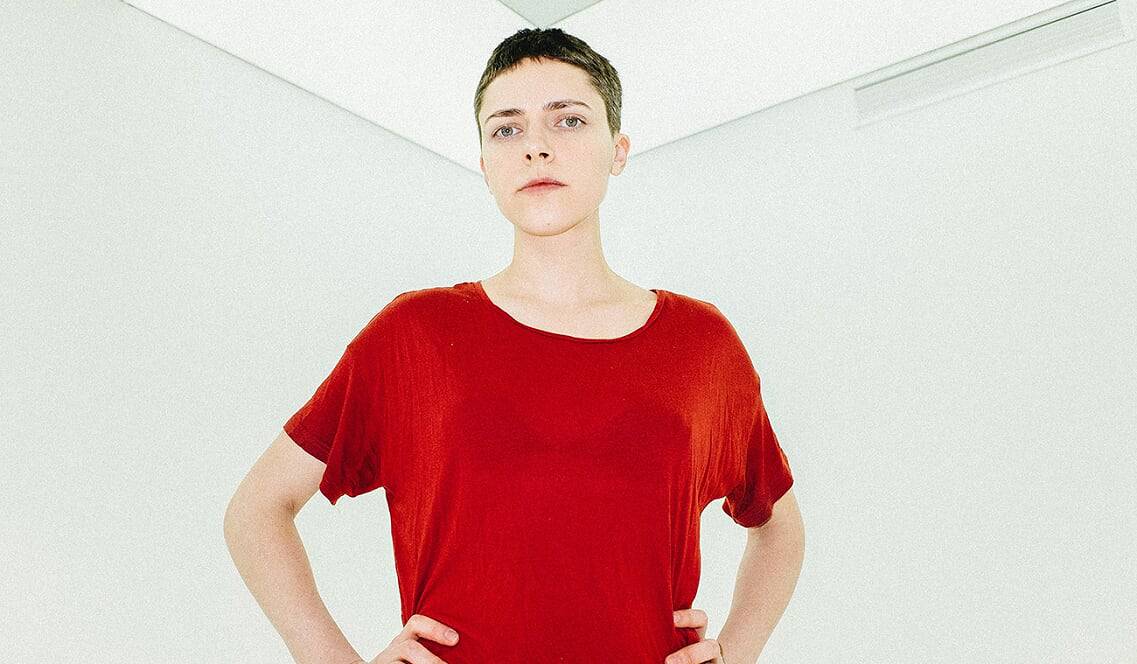
Anna Zvyagintseva
Anna’s works have been exhibited in institutions and galleries such as the National Art Museum of Ukraine in Kiev; the PinchukArtCentre also in Kiev; Galeria Labirynt in Lublin, Poland; Galeria Arsenał in Białystok, also in Poland; the Zamek Ujazdowski Centre for Contemporary Art in Warszawa, also in Poland; Architekturzentrum Wien in Vienna; the Latvian Centre for Contemporary Art in Riga; the Tobacco 001 Cultural Centre in Ljubljana, Slovenia; Badischer Kunstverein in Karlsruhe, Germany, the Museum of Contemporary Art in Leipzig, and others.
Anna Zvyagintseva is a winner of the PinchukArtCentre’s Special Award in 2015, and she was a Finalist at the same in 2017. In 2015, Anna participated in the “Hope!” project, in the Ukraine Pavilion at the 56th International Art Exhibition la Biennale di Venezia.
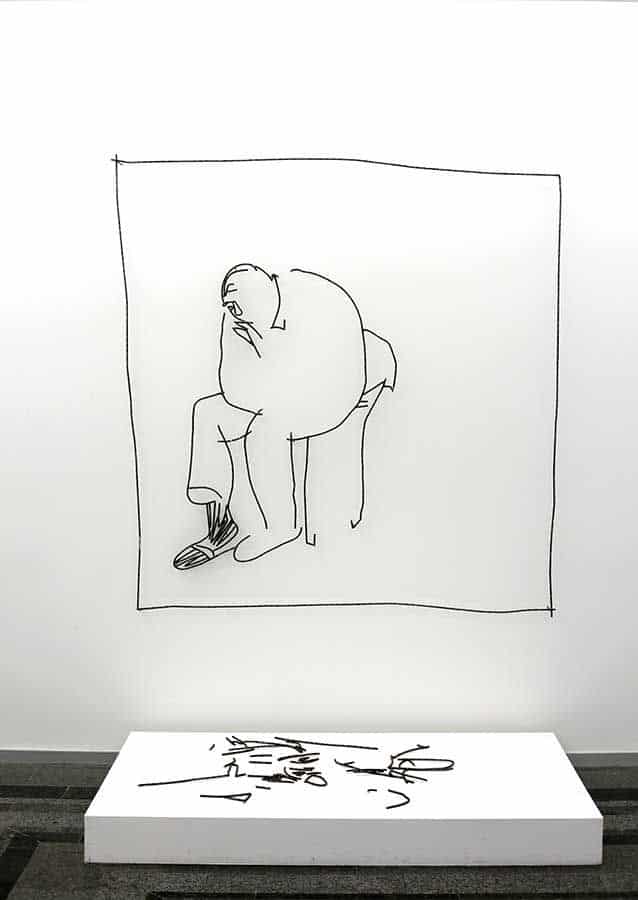
Anna Zvyagintseva – Order of things, 2015, PinchukArtCenter, Kyiv
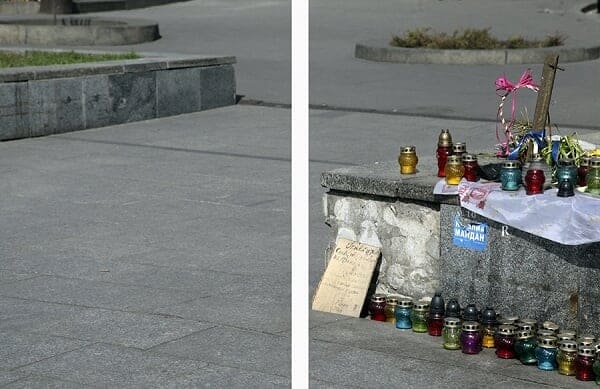
Anna Zvyagintseva -Event (gap), 2014-2015

Anna Zvyagintseva – The Cage, Pavilion of Ukraine at the 56th International Art Exhibition – la Biennale di Venezia, Italy, 2015
Bludov Andriy is a Ukrainian painter and graphic artist, a member of the National Union of Artists, and a lecturer at the National Academy Of Fine Arts And Architecture. This artist balances between harmony and chaos, and gives the viewer an opportunity to escape from the grayness of daily reality, into the world of colorful images and exquisite texture. The viewer, finding themselves entwined by the twisted symbolism of Bludov’s works, sink into a maze where the only way out is by reflecting on the state of modern man’s being.

Andriy Bluzov
Bludov Andriy has had solo exhibitions at the Appia Gallery in Grenoble; Inter Art Galerie Reich in Cologne; Art Felchlin Gallery in Zurich; Gallery Tuset in Barcelona; Pavlovsky Arts and Crafts Gallery in Utrecht; Triptych Gallery in Kyiv; and the Lviv Palace of Arts in Lviv. From October 17th onto November 5th, the Karas Gallery in Kiev is hosting Andriy’s exhibition City Vision, the main theme of which is a problem that’s relevant to each of us: the intertwining of the virtual and real worlds, the future and the present, and the impact of these processes on a person.

Andriy Bludov – CITY VISION, 2019, Karas Gallery, Kyiv
1. A “small Soviet man” is a cultural image, in the same vein as ‘Lady Liberty’, ‘John Bull’, ‘Uncle Sam’ and ‘Polonia’. The ‘small Soviet man’ is an image of the common man at the bottom of the social order – hard-done-by, mortified, spat upon, humiliated, offended. There is one significant difference between the ‘small Soviet man’ and the others: Where ‘John Bull’ and ‘Polonia’ are allegorical national personifications, ‘the small Soviet man’ is entirely real.
2. – Intertextuality – Intertextuality is the shaping of a text’s meaning by another text. In this instance, it is the way in which the presented texts in a piece influence the way in which viewers read, understand, and perceive unusual connections between words that usually seem to have no connection at all.
3. Metadiscursiveness – In essence, conversations that are about some aspect of another conversation. In this instance, the metadiscourse exists in the fact that the audience is the subject of the installation, and yet the installation remains – to a degree – incomplete until the audience arrives.


